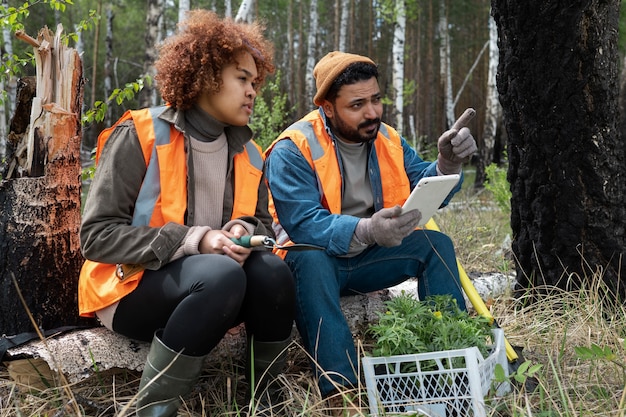Essential Insights Into Phase 2 Environmental Site Assessment Procedures Explained
Phase 2 Environmental Site Assessments (ESA) are critical processes used to evaluate potential contamination on a property, particularly when Phase 1 assessments indicate possible environmental risks. These assessments play a key role in mitigating liability concerns, guiding site remediation, and ensuring compliance with environmental regulations.
Understanding the procedures of a Phase 2 ESA is essential for property owners, developers, and environmental professionals alike. This article delves into the critical aspects of Phase 2 ESA procedures and their significance.For all your Phase 2 Environmental Site Assessment requirements, visit alphaenvironmental.com.au.
What Is a Phase 2 Environmental Site Assessment?
Phase 2 ESA involves a detailed examination of the environmental condition of a property, focusing on specific areas of concern identified in Phase 1 ESA. While Phase 1 assessments are largely non-intrusive, Phase 2 includes physical testing and sampling to confirm the presence and extent of contamination. This phase is crucial in determining whether a property poses a risk to human health or the environment.
The Purpose of Phase 2 ESA
The primary goal of a Phase 2 ESA is to confirm or refute the presence of contaminants such as hazardous chemicals, heavy metals, petroleum hydrocarbons, or other pollutants that could potentially harm the property or nearby areas. The assessment aims to evaluate the severity of the contamination, outline the necessary remediation steps, and assess future liability for property buyers or developers.
Key Steps in the Phase 2 ESA Process
The Phase 2 ESA process involves several well-defined steps, each designed to collect data and analyze the contamination risk effectively.

Planning and Scope of Work
The first step in a Phase 2 ESA is to create a comprehensive scope of work based on the findings of the Phase 1 assessment. This plan outlines the areas to be investigated, the types of contaminants suspected, and the specific testing procedures to be employed. It typically includes:
- Sampling locations
- Testing methods (e.g., soil, groundwater, and air sampling)
- Regulatory requirements
- Health and safety protocols
Proper planning ensures that the assessment is thorough and meets the regulatory guidelines for environmental compliance.
Sampling and Fieldwork
Once the scope of work is established, the fieldwork phase begins. This stage involves the collection of physical samples from the site, which can include soil, groundwater, surface water, and air samples, depending on the areas of concern. Environmental professionals use specialized equipment to extract samples from various depths and locations.
The sampling process aims to provide a clear picture of the extent of contamination by examining multiple sources. These samples are then sent to certified laboratories for analysis, where advanced testing techniques are used to identify and quantify pollutants.

Laboratory Analysis
The collected samples are analyzed in laboratories to detect the presence and concentration of contaminants. Commonly tested substances include:
- Volatile organic compounds (VOCs)
- Polychlorinated biphenyls (PCBs)
- Petroleum hydrocarbons
- Heavy metals like lead and arsenic
The laboratory results are crucial for understanding the contamination levels on the property and whether they exceed regulatory limits. These findings directly impact the recommendations for remediation or further investigation.
Assessing the Results of a Phase 2 ESA
Once the laboratory results are available, environmental consultants assess the data to determine the severity and scope of contamination. The findings are then compared against local, state, and federal environmental regulations. If the contaminant levels exceed acceptable limits, the consultant will recommend specific actions for remediation or risk mitigation.
Risk Assessment
The next step is conducting a risk assessment based on the laboratory data. This assessment evaluates the potential human and ecological risks associated with the contamination. It involves identifying pathways through which contaminants might impact human health (e.g., soil ingestion, groundwater contamination) and determining the likelihood of exposure.
Risk assessments help stakeholders understand the level of urgency and the type of response required. If the contamination is deemed hazardous, immediate remediation steps may be necessary to prevent further harm.
Remediation and Cleanup Recommendations
If contamination is confirmed during the Phase 2 ESA, the report will include specific recommendations for cleanup or further monitoring. Depending on the severity of the contamination, the following remediation actions might be recommended:
- Excavation and Removal: Contaminated soil is excavated and transported to an appropriate disposal facility.
- Soil Vapor Extraction: This method removes volatile contaminants from the soil by extracting vapors using a vacuum system.
- Groundwater Treatment: If groundwater is contaminated, various treatment options, such as pump-and-treat systems or in-situ chemical oxidation, may be recommended to clean it up.
- Monitored Natural Attenuation (MNA): In cases where contamination levels are low, Monitored Natural Attenuation (MNA) may be implemented, allowing natural processes to gradually reduce contamination over time while ongoing monitoring ensures safety and effectiveness.
Each remediation strategy depends on the type of contaminant, the severity of contamination, and the specific conditions of the site.
Regulatory Compliance and Reporting
Throughout the Phase 2 ESA process, strict adherence to regulatory guidelines is essential. The assessment must comply with the standards set by organizations such as the Environmental Protection Agency (EPA) in the United States or similar bodies in other countries. These regulations ensure that the investigation is thorough and that any required remediation is conducted following safety and environmental protocols.
After completing the Phase 2 ESA, the environmental consultant will prepare a detailed report summarizing the findings, laboratory results, and recommended next steps. This report serves as a critical document for property owners, potential buyers, and regulators, ensuring transparency and accountability in managing environmental risks.

